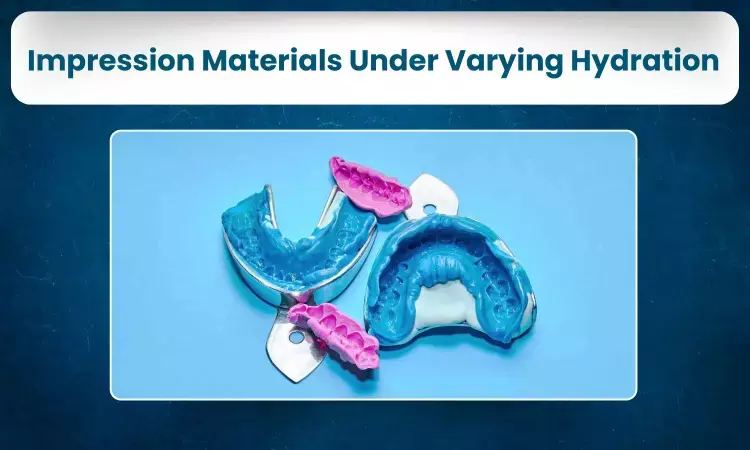- Home
- Medical news & Guidelines
- Anesthesiology
- Cardiology and CTVS
- Critical Care
- Dentistry
- Dermatology
- Diabetes and Endocrinology
- ENT
- Gastroenterology
- Medicine
- Nephrology
- Neurology
- Obstretics-Gynaecology
- Oncology
- Ophthalmology
- Orthopaedics
- Pediatrics-Neonatology
- Psychiatry
- Pulmonology
- Radiology
- Surgery
- Urology
- Laboratory Medicine
- Diet
- Nursing
- Paramedical
- Physiotherapy
- Health news
- Fact Check
- Bone Health Fact Check
- Brain Health Fact Check
- Cancer Related Fact Check
- Child Care Fact Check
- Dental and oral health fact check
- Diabetes and metabolic health fact check
- Diet and Nutrition Fact Check
- Eye and ENT Care Fact Check
- Fitness fact check
- Gut health fact check
- Heart health fact check
- Kidney health fact check
- Medical education fact check
- Men's health fact check
- Respiratory fact check
- Skin and hair care fact check
- Vaccine and Immunization fact check
- Women's health fact check
- AYUSH
- State News
- Andaman and Nicobar Islands
- Andhra Pradesh
- Arunachal Pradesh
- Assam
- Bihar
- Chandigarh
- Chattisgarh
- Dadra and Nagar Haveli
- Daman and Diu
- Delhi
- Goa
- Gujarat
- Haryana
- Himachal Pradesh
- Jammu & Kashmir
- Jharkhand
- Karnataka
- Kerala
- Ladakh
- Lakshadweep
- Madhya Pradesh
- Maharashtra
- Manipur
- Meghalaya
- Mizoram
- Nagaland
- Odisha
- Puducherry
- Punjab
- Rajasthan
- Sikkim
- Tamil Nadu
- Telangana
- Tripura
- Uttar Pradesh
- Uttrakhand
- West Bengal
- Medical Education
- Industry
Comparative In-Vitro Analysis Highlights Performance of Impression Materials Under Varying Hydration

Himachal Pradesh: A recent study published in the Dental Journal of Advance Studies found no statistically significant difference in dimensional stability between addition silicone and condensation silicone impression materials when compared to control measurements. However, addition silicone demonstrated superior surface detail reproduction compared to condensation silicone.
Elastic impression materials are essential tools in dentistry for creating negative replicas of teeth and surrounding structures, especially for cast restorations. From this negative impression, a positive replica, or cast, is produced. This cast must be an exact and accurate form of the prepared tooth and should be free of bubbles, particularly around the cervical margins. In this study, the research team aimed to assess whether different conditions such as dry, moist, and wet, have any effect on the reproducibility of two different vinyl polysiloxane (VPS) impression materials.
This in vitro study compared addition silicone and condensation silicone impression materials (VPS) using 120 samples, each fabricated as 3 mm thick discs. Impressions were made on a stainless steel die engraved with precise reference lines, in accordance with ANSI/ADA Specification No. 19. The materials were tested under three conditions: dry, moist (die exposed to a homogeneous mist of artificial saliva at 32 ± 2°C), and wet (die soaked in water during application). Dimensional accuracy, dimensional stability, and surface detail reproduction were measured for the two materials.
The key findings from the study include:
- Dimensional Accuracy: Addition silicone consistently demonstrated superior detail reproduction and dimensional accuracy compared to condensation silicone. Among the addition silicones, the dry condition yielded the best vertical dimensional accuracy, outperforming both moist and wet conditions.
- Dimensional Stability: By the end of the experimental period, no statistically significant differences in dimensional stability were observed for either addition silicone or condensation silicone when compared to control measurements.
- Surface Detail and Moisture: Moisture negatively affected surface detail reproduction across all materials. However, under moist conditions, addition silicone still performed better than under wet conditions, showing relatively improved surface detail reproduction.
Highlighting the clinical relevance of these findings, Col (Dr) Prof Manjit Kumar, Department of Prosthodontics, Bhojia Dental College and Hospital, Baddi, Himachal Pradesh, India corresponding author of the study, stated, “The findings of this study have direct clinical relevance in material selection. In terms of dimensional accuracy, addition silicone produced better detail reproduction compared to condensation silicone, particularly in dry conditions. Regarding dimensional stability, although statistical analysis revealed non-significant differences, the numerical values indicated that wet condensation silicone showed the least stability. For surface detail reproduction, moist addition silicone performed best, suggesting that minimal moisture presence may support better surface recording, whereas excessive moisture adversely affects detail reproduction.”
Expanding on the implications, Col (Dr) Prof Manjit Kumar emphasized the need for further exploration. “Since addition silicone demonstrated superior dimensional stability, further research should focus on evaluating its behavior in actual oral conditions—considering intraoral temperature, humidity, and patient-specific variations. Such studies could pave the way for the development of more refined impression materials that perform optimally in real clinical environments.”
The study reinforces the superior performance of addition silicone in terms of dimensional accuracy and surface detail reproduction, particularly under dry conditions. While no significant differences were found in dimensional stability between the materials, moisture was shown to adversely affect detail reproduction. These findings highlight the importance of selecting the right impression material and maintaining optimal conditions to ensure precise clinical outcomes.
Reference: Kaur, M., Kalra, T., Kumar, M., Bansal, A., Avasthi, A., & Thakur, S. (2025). An In Vitro Study to Examine the Comparative Accuracy and Stability of Elastomeric Impression Materials under Different Levels of Hydration. Dental Journal of Advance Studies, 13(1), 1-7.
Dr Bhumika Maikhuri is an orthodontist with 2 years of clinical experience. She is also working as a medical writer and anchor at Medical Dialogues. She has completed her BDS from Dr D.Y. Patil Medical College and Hospital and MDS from Kalinga Institute of Dental Sciences. She has a few publications and patents to her credit. Her diverse background in clinical dentistry and academic research uniquely positions her to contribute meaningfully to our team.


